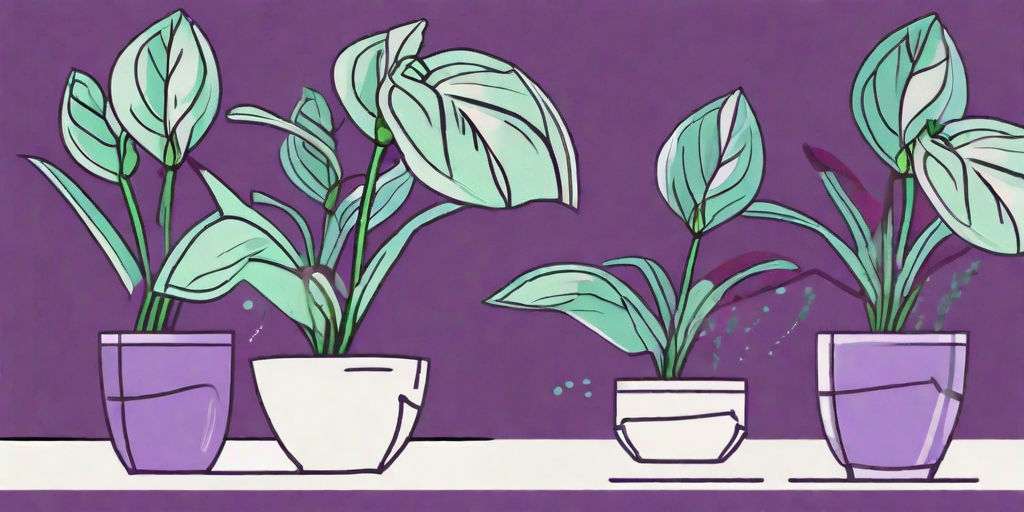
Welcome, green thumbs and plant enthusiasts! Are you ready to delve into the fascinating world of Tradescantia Zebrina propagation? If your answer is a resounding "Yes!" then buckle up, because we're about to embark on a botanical journey that's as thrilling as a roller coaster ride (minus the nausea, hopefully).
The Tradescantia Zebrina: A Quick Introduction
Before we dive into the propagation process, let's get to know our star plant a little better. The Tradescantia Zebrina, also known as the Wandering Jew or the Silver Inch Plant, is a fast-growing, easy-to-care-for houseplant that's as dramatic as a soap opera starlet with its purple, silver, and green striped leaves.
Native to Mexico, this plant is a real globetrotter and has made itself at home in many parts of the world. It's a favorite among plant enthusiasts for its striking appearance and its ability to propagate faster than rumors in a small town.
Why Propagate Tradescantia Zebrina?
Now, you might be wondering, "Why should I propagate my Tradescantia Zebrina?" Well, aside from the sheer joy of watching a tiny cutting grow into a full-fledged plant, there are several practical reasons to do so.
Firstly, propagation helps control the size of the mother plant, preventing it from turning into a botanical Godzilla in your living room. Secondly, it's a great way to multiply your plant collection without spending a dime. Finally, propagated plants make thoughtful, budget-friendly gifts for your plant-loving friends.
How to Propagate Tradescantia Zebrina: The Step-by-Step Guide
Step 1: Gather Your Materials
Before you start, make sure you have the following items on hand:
- A healthy Tradescantia Zebrina plant
- A clean, sharp pair of scissors or a knife
- A small pot or container
- Fresh potting soil
Step 2: Take a Cutting
Choose a healthy, robust stem on your Tradescantia Zebrina. Using your sharp scissors or knife, cut a 4-6 inch section of the stem just below a node (the point where the leaf joins the stem). Make sure your cutting has at least two leaves on it.
Step 3: Plant the Cutting
Fill your pot or container with fresh potting soil and plant your cutting. The node should be buried in the soil, as this is where the new roots will sprout from. Water the cutting thoroughly and place it in a warm, bright spot, but out of direct sunlight.
Step 4: Wait and Watch
Patience is key here. It may take a few weeks for your cutting to sprout new roots. Keep the soil moist but not waterlogged, and before you know it, you'll see new growth emerging.
Common Mistakes to Avoid
While propagating Tradescantia Zebrina is relatively straightforward, there are a few common mistakes that can hinder your success. Let's take a look at what not to do.
Firstly, avoid taking cuttings from a sick or stressed plant. These cuttings are less likely to root successfully and may even spread disease to your other plants. Secondly, don't overwater your cuttings. While they need to stay moist, waterlogged soil can lead to root rot. Finally, don't plant your cuttings too deep. The node should be just below the soil surface.
Frequently Asked Questions
Can I propagate Tradescantia Zebrina in water?
Absolutely! Many plant enthusiasts prefer water propagation as it allows them to watch the roots develop. Simply place your cutting in a jar of water, making sure the node is submerged. Change the water every few days to prevent bacterial growth.
How long does it take for Tradescantia Zebrina cuttings to root?
Typically, Tradescantia Zebrina cuttings root within 2-3 weeks. However, this can vary depending on factors such as temperature, light levels, and the overall health of the cutting.
Why are my Tradescantia Zebrina cuttings wilting?
Wilting cuttings can be a sign of overwatering, under watering, or a lack of humidity. Check the moisture levels in the soil and adjust as necessary. If your cuttings continue to wilt, try moving them to a more humid location.
Conclusion
And there you have it, folks! A comprehensive guide to propagating Tradescantia Zebrina. With a little patience and care, you'll soon have a thriving jungle of these stunning plants. So, what are you waiting for? Grab those scissors and start snipping!















